
The Laconia incident was a series of events surrounding the sinking of a British passenger ship in the Atlantic Ocean on 12 September 1942, during World War II, and a subsequent aerial attack on German and Italian submarines involved in rescue attempts. RMS Laconia, carrying 2,732 crew, passengers, soldiers, and prisoners of war, was torpedoed and sunk by U-156, a German U-boat, off the West African coast. Operating partly under the dictates of the old prize rules, the U-boat's commander, Korvettenkapitän Werner Hartenstein, immediately commenced rescue operations. U-156 broadcast her position on open radio channels to all Allied powers nearby, and was joined by the crews of several other U-boats in the vicinity.
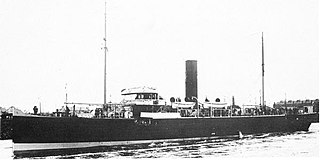
Q-ships, also known as Q-boats, decoy vessels, special service ships, or mystery ships, were heavily armed merchant ships with concealed weaponry, designed to lure submarines into making surface attacks. This gave Q-ships the chance to open fire and sink them.

RMS Laconia was a Cunard ocean liner, built by Swan, Hunter & Wigham Richardson as a successor of the 1911–1917 Laconia. The new ship was launched on 9 April 1921, and made her maiden voyage on 25 May 1922 from Southampton to New York City. At the outbreak of the Second World War she was converted into an armed merchant cruiser, and later a troopship. She was sunk in the South Atlantic Ocean on 12 September 1942 by torpedoes. Like her predecessor, sunk during the First World War, this Laconia was also destroyed by a German submarine. Some estimates of the death toll have suggested that over 1,658 people were killed when the Laconia sank. The U-boat commander Werner Hartenstein then staged a dramatic effort to rescue the passengers and the crew of Laconia, which involved additional German U-boats and became known as the Laconia incident.
German submarine U-333 was a Type VIIC U-boat of Nazi Germany's Kriegsmarine during World War II. The submarine was laid down on 11 March 1940 at the Nordseewerke yard at Emden, launched on 14 June 1941, and commissioned on 25 August 1941 under the command of Kapitänleutnant Peter-Erich Cremer. After training with the 5th U-boat Flotilla at Kiel, on 1 January 1942 U-333 was transferred to the 3rd U-boat Flotilla based at La Pallice for front-line service.
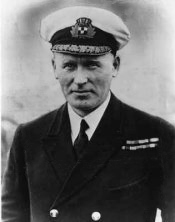
Ronald Niel Stuart, VC, DSO, RD, RNR was a British Merchant Navy commodore and Royal Navy captain who was highly commended following extensive and distinguished service at sea over a period of more than thirty-five years. During World War I he was awarded the Victoria Cross, the Distinguished Service Order, the French Croix de Guerre avec Palmes and the United States' Navy Cross for a series of daring operations he conducted while serving in the Royal Navy against the German U-boat campaign in the Atlantic.
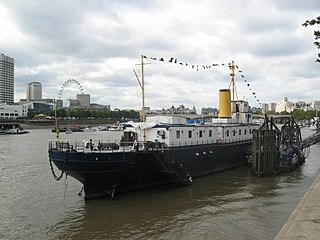
The twenty-eight Anchusa-class sloops were built under the Emergency War Programme for the Royal Navy in World War I as the final part of the larger "Flower class", which were also referred to as the "Cabbage class", or "Herbaceous Borders".

HMS Sickle was a third-batch S-class submarine built for the Royal Navy during World War II. Completed in 1942, she made her initial war patrol off the Norwegian coast. Sickle then sailed to Gibraltar, from where she conducted one patrol, then to Algiers, French North Africa. From 10 May to 10 October, the boat patrolled the Gulf of Genoa five times and sank a German submarine as well as three minesweepers and an escort ship. She then moved to Beirut, French Lebanon, and conducted two patrols in the Aegean Sea, sinking three caïques and a merchant ship, in addition to landing resistance operatives in Greece.
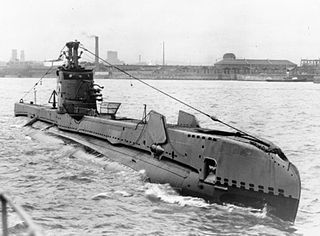
HMS Saracen was a third-batch S-class submarine built for the Royal Navy during the Second World War. Completed in 1942, Saracen conducted a patrol in the North Sea where she sank a German U-boat. She was then assigned to the 10th Submarine Flotilla in Malta, from where she made three patrols; on her second, she sank an Italian submarine. Saracen was then reassigned to the 8th Submarine Flotilla, based in Algiers, French North Africa.
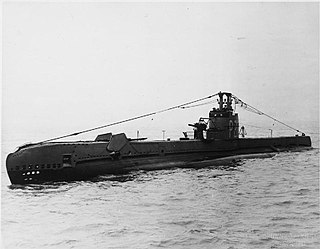
HMS Sahib was a third-batch S-class submarine built for the Royal Navy during the Second World War. She was launched on 19 January 1942 and commissioned on 13 May 1942. She was the only British naval vessel to bear the name Sahib.

SS Fanad Head was a UK cargo steamship. She was built during the First World War and torpedoed and sunk ten days after the UK entered the Second World War.

SS California was a twin-screw steamer that D. and W. Henderson and Company of Glasgow built for the Anchor Line in 1907 as a replacement for the aging ocean liner Astoria, which had been in continuous service since 1884. She worked the Glasgow to New York transatlantic route and was sunk by the German submarine SM U-85 on 7 February 1917.
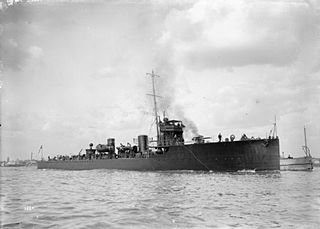
HMS Ariel was an Acheron-class destroyer built in 1911, which served during the First World War and sank in 1918 after striking a mine. Named after Shakespeare's "airy spirit", or the biblical spirit of the same name, she was the tenth and last ship of the name to serve in the Royal Navy.

HMS Attack was an Acheron-class destroyer built in 1911, which served during the First World War and was sunk in 1917 in the Mediterranean by a German U-boat. She was the third ship of the name to serve in the Royal Navy.
German submarine U-198, was a Type IXD2 U-boat which fought in World War II. She was built by the Deschimag DeSchiMAG AG Weser in Bremen. She was laid down on 1 August 1941 as yard number 1044, launched on 15 June 1942 and commissioned on 3 November under Kapitän zur See Werner Hartmann.
HMS Farnborough, also known as (Q-5), was a Q-ship of the British Royal Navy that saw service in the First World War. Farnborough was a heavily armed merchant ship with concealed weaponry that was designed to lure submarines into making surface attacks. Farnborough sank two submarines in her service in the First World War. The first submarine was SM U-68 which involved the first successful use of depth charges. The second submarine was SM U-83, which was sunk on 17 February 1917 in an action for which Captain Gordon Campbell of Farnborough received the Victoria Cross. HMS Farnborough was severely damaged in the action and was beached the same day.

The action of 15 October 1917 was a naval engagement of World War I between Imperial Germany and the United States off the coast of Mine Head, Ireland.
German submarine U-65 was a Type IXB U-boat of Nazi Germany's Kriegsmarine during World War II. Over the course of six war patrols between 9 April 1940 and 28 April 1941, she sank twelve ships and damaged three others for a total loss of 88,664 gross register tons (GRT).
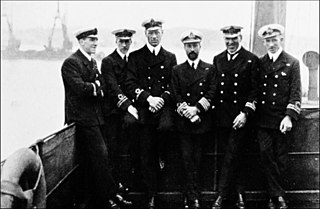
Captain Cedric Naylor was a Royal Navy officer of the First and Second World Wars. Naylor was a merchant seaman before joining the Royal Naval Reserve on the outbreak of the First World War. In November 1915 he was posted as first lieutenant to HMS Penshurst, a Q-ship, a warship disguised as a merchant vessel intended to fool German U-boats into surfacing so they could be sunk. Naylor received the Distinguished Service Cross for his part in the sinking of SM UB-19 on 30 November 1916 and a bar for further operations in February and March 1917. Naylor was granted temporary command of Penshurst after its captain was incapacitated in June and the next month damaged a submarine, for which he was awarded the Distinguished Service Order. Further distinguished service in the following months saw him receive a bar to the medal and a transfer to the Royal Navy. Naylor was hunting for SM U-110 on Christmas Eve 1917 and Penshurst was struck by a torpedo fired by the submarine. Despite suffering heavy damage Naylor remained onboard with two gun crews, hoping the U-boat would surface to finish off the ship. When U-110 surfaced it was hit twice and damaged before Penshurst sank. Naylor survived and was awarded a second bar to his DSO. He commanded the sloop Polyanthus for the remainder of the war.
SS Blitar was a Dutch cargo steamship that was launched in Rotterdam in 1922 and sunk in the Battle of the Atlantic in 1943. She is notable for having fought off three u-boats in succession for nearly ten hours before U-632 finally managed to sink her. 26 of Blitar's complement were killed.
HMS Alyssum was an Arabis-class minesweeping sloop of the British Royal Navy which served during the First World War. Alyssum was built in 1915 by Earle's Shipbuilding, and was used for minesweeping, escort and patrol duties in the North and Irish Seas. The sloop sank after hitting a German mine on 18 March 1917.















